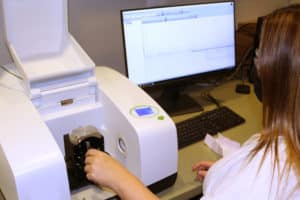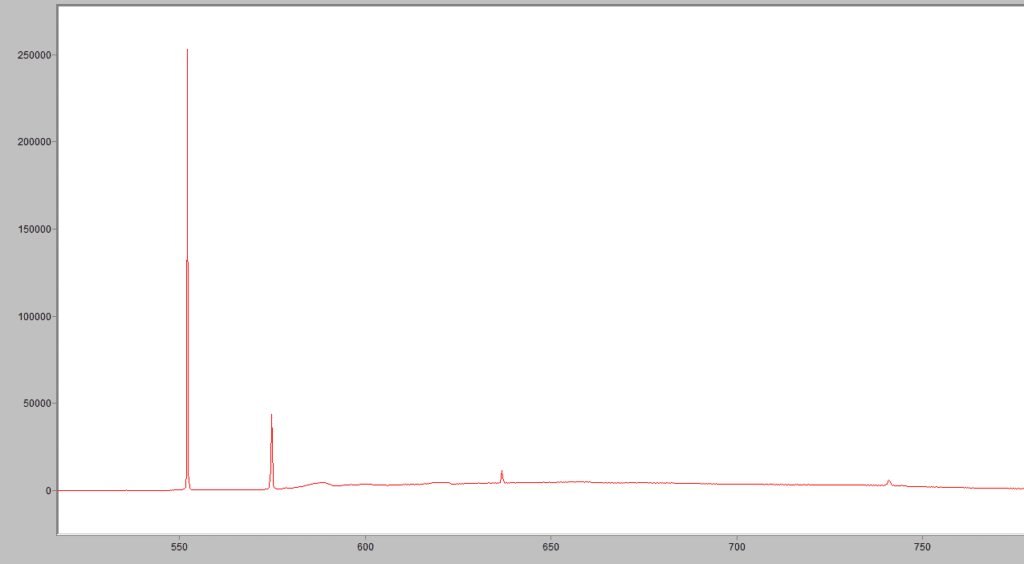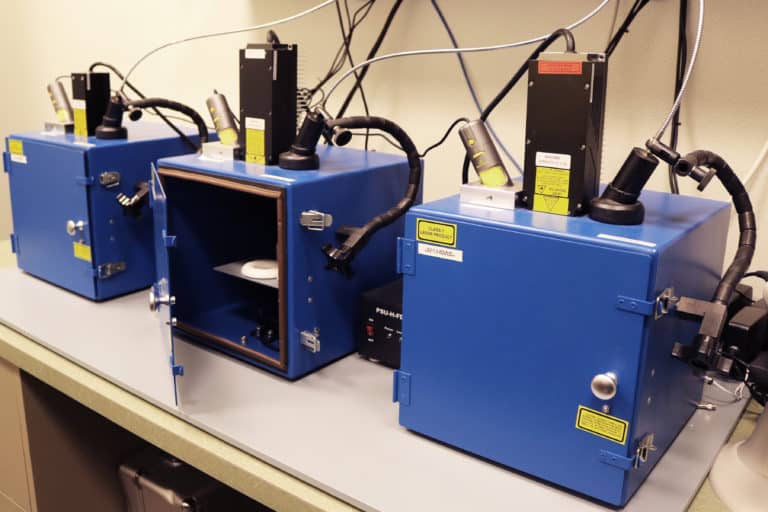By Wade Abel, CG, Director of Gemological Services, AGS Laboratories
One of the factors of a diamond grade that greatly impacts the diamond’s value is the diamond’s color. For colorless diamonds in the D-Z range, the possibility of obtaining a higher color using treatment can be potentially attractive. Most treatments for color are permanent and, therefore, can be assessed at AGS Laboratories.
The important job of a third-party diamond grading lab is the appropriate disclosures that are required when treatment is detected. Specific protocols at AGS Laboratories provide our Advanced Detection team with the needed clues and evidence to make the right calls.
The most common treatment used to improve color for natural diamonds is high pressure, high temperature (HPHT). There are other treatment methods such as irradiation and annealing (low-pressure heat treating), however, these are typically used to create fancy color in diamonds such as blue, pink, and green.
Determining if a diamond has been treated, or not, is a process of gathering evidence that supports the call. Many factors are important, including the color of the diamond. Additionally, gathering gemological evidence by examining the clarity as the HPHT process can impact the appearance of the clarity characteristics. The Lab can collect further evidence with spectroscopy.

It is important to learn the diamond type because it is the first clue to categorizing if a diamond could be treated or not. Using Fourier Transform Infrared Spectroscopy (FTIR) makes this determination. Only diamonds without detectible nitrogen (Type IIa) and a specific aggregation of nitrogen (Type IaB) can accept HPHT treatment to improve color. If a diamond is one of these specific treatable diamond types, it requires further testing. All other diamond types will not show improvement, so if a diamond is discovered to be one of the other types (Ia, IaA, or IaAB), the color origin is determined to be natural.
The most determinative testing to detect treatment for type IIa and type IaB diamonds is photoluminescent spectroscopy. The process at the Lab starts by using a 514nm laser excitation. Analysis of the peaks in the spectral graph includes comparing peaks with one another as well as the presence, or absence, of additional peaks. HPHT treatment can change the ratio of some peaks when compared or even remove some peaks. This testing is done at liquid nitrogen temperatures. The cold temperatures provide a cleaner spectrum as the atoms in the crystal lattice are slowed. This is often enough evidence to make a call, however, this is not always completely determinative. The result of this testing will display specific peaks in the spectrum that, when interpreted, can prove treatment, prove that there was no treatment, or in some cases, not provide enough information to make a determination.
An example of a spectral graph showing indicative peaks at 575nm, 637nm, and 741nm. The interpretation of these peaks provides evidence for the Advanced Detection team.
Combining the evidence provided with the spectrum and other observations will begin to fit the diamond into categories of “safe,” “caution,” or “danger.” If a diamond has indicative peaks and is “safe,” it is conclusive that the diamond has not been treated and has natural color origin. “Danger” means the diamond is treated based on the evidence. If a diamond falls in the “caution” range, it will need more evidence gathered to provide a determination.
The use of additional photoluminescent spectroscopy provides this evidence. AGS Laboratories has a custom-built instrument that allows for three additional laser excitations, expanding the analysis view. If there are still no indicative spectral peaks after these additional steps, the diamond may be determined inconclusive for treatment. This is quite rare; most often occurring in type IIa diamonds. For a conclusive determination, there needs to be proof resulting from the interpretation and analysis of the evidence.
The determinations for color treatment are ultimately important to be disclosed. Therefore, all disclosures are stated on the report in the comments. The Lab’s goal is to be able to make a determination one way or another. On the rare occasion when it is inconclusive if the diamond has been treated, additional options are discussed with the client. This open communication is needed to ensure that our mission of consumer protection is upheld.


